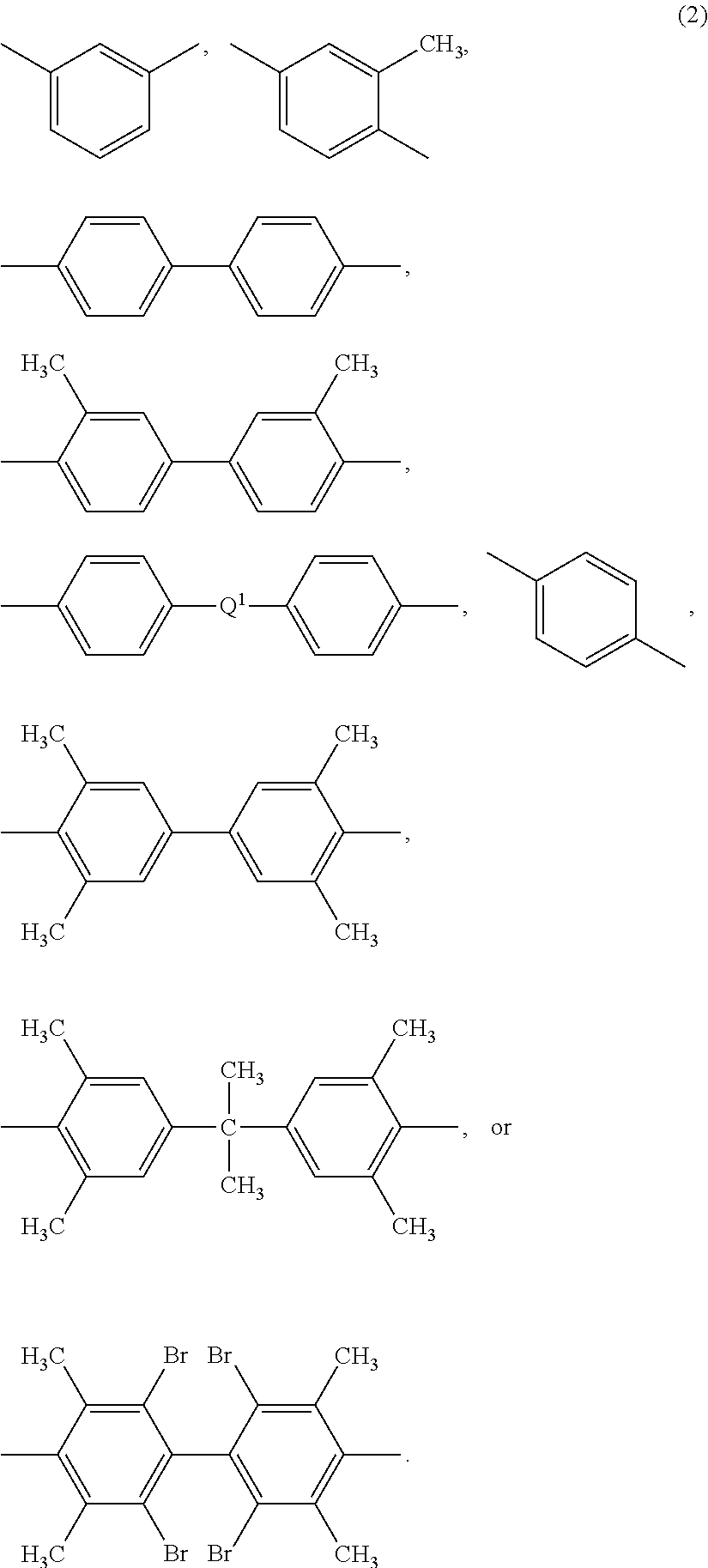Electrical insulation paper, methods of manufacture, and articles manufactured therefrom
a technology of electric insulation paper and paper, which is applied in the field of electric insulation paper, can solve the problems of negative effect on the system-level performance of the insulation system, and the limited thermal capacity of cellulose paper, and achieves the effect of cascading cycle of auto-catalytic degradation, reducing the electrical properties of materials, and improving the insulation
- Summary
- Abstract
- Description
- Claims
- Application Information
AI Technical Summary
Benefits of technology
Problems solved by technology
Method used
Image
Examples
examples
Materials
[0150]The materials used in the Examples are shown on Table 1.
TABLE 1ComponentChemical DescriptionSource, VendorULTEM 9011Polyetherimide (PEI)SABIC Innovative PolymersTWARONAramid FiberTeijin Aramid BVTWARONAramid FibridTeijin Aramid BV
Twaron is a para-aramid polymer, specifically poly p-phenylene terephthalamide (PpPTA), commercially available from Teijin Aramid BV.
Techniques and Procedures
[0151]Tensile Strength was determined by ASTM D828.
[0152]Percent Elongation was determined by ASTM D828.
[0153]Young's Modulus was determined by ASTM D638.
[0154]Elmendorf Tear Strength was determined by ASTM D1922
[0155]Samples were prepared according to the formulations shown on Table 2:
TABLE 2Basis PEI Aramid AramidWeightSamplefiberFiberFibridGrams / m2IDwt. %wt. %wt. %(GSM)A65251040B65251080C50302080D50302040
[0156]Paper Making Technique. A fiber slurry was formed by combining the fibers in water. The fibers were deposited on a mesh to form a layer and dewatered in a 12-inch×12-inch hand p...
PUM
| Property | Measurement | Unit |
|---|---|---|
| wt. % | aaaaa | aaaaa |
| wt. % | aaaaa | aaaaa |
| thickness | aaaaa | aaaaa |
Abstract
Description
Claims
Application Information
 Login to View More
Login to View More - R&D
- Intellectual Property
- Life Sciences
- Materials
- Tech Scout
- Unparalleled Data Quality
- Higher Quality Content
- 60% Fewer Hallucinations
Browse by: Latest US Patents, China's latest patents, Technical Efficacy Thesaurus, Application Domain, Technology Topic, Popular Technical Reports.
© 2025 PatSnap. All rights reserved.Legal|Privacy policy|Modern Slavery Act Transparency Statement|Sitemap|About US| Contact US: help@patsnap.com



